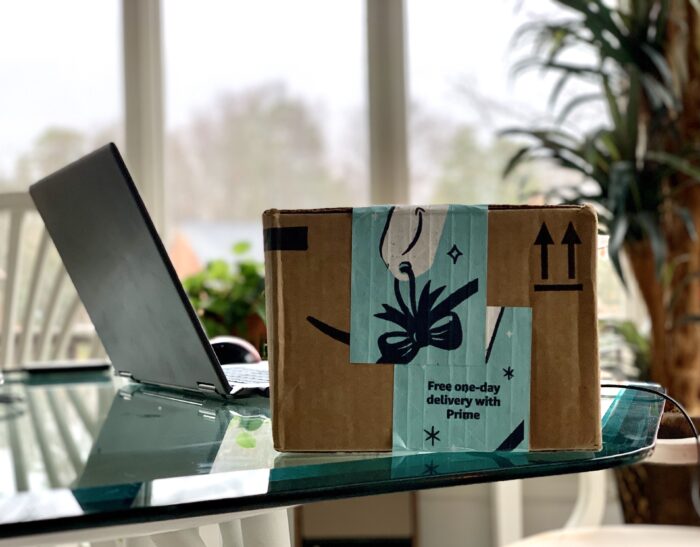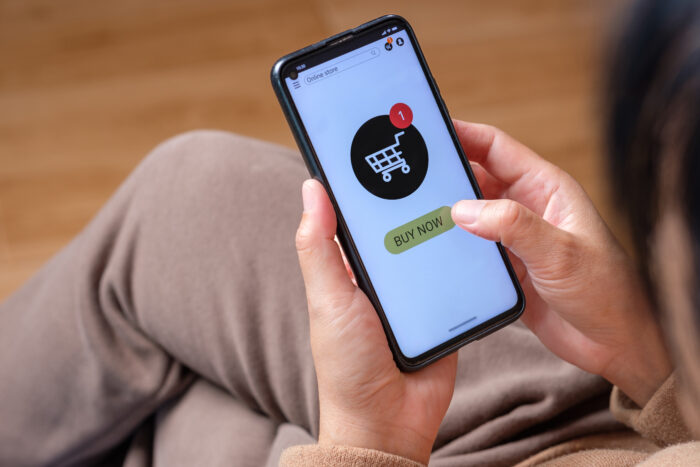Amazon’s Buy Box is more than just a ‘Buy Now’ button—it’s a gateway to a marketplace serving millions of customers worldwide. As one of the world’s largest online retailers, Amazon holds massive potential for businesses of all sizes seeking to tap into its broad and diverse consumer base. The Buy Box, also called the “Featured Offer,” is prominently displayed on product listing pages and is a competitive arena where sellers strive to feature their products, significantly impacting their visibility and sales.
The importance of winning the Amazon Buy Box cannot be understated. Being featured in the Buy Box enhances a seller’s credibility, amplifies product visibility, and most importantly, leads to increased sales.
However, earning a place in the Buy Box is not a simple task. Amazon utilizes a complex algorithm to determine which products get featured. Understanding this algorithm and developing an effective Buy Box strategy can be the key to unlocking success on this vast eCommerce platform.
The Pros and Cons of Listing on Amazon
When deliberating over listing products on Amazon, it is crucial to consider the potential benefits and drawbacks.
Pros:
- Extensive Customer Base: Amazon boasts over 200 million active buyers and a gross merchandise value exceeding $60 billion per year.
- Rapid Growth: Amazon’s growth rate outpaces traditional eCommerce marketplaces, offering sellers abundant opportunities to expand their customer reach.
- Ideal Demographics: Amazon’s user base aligns perfectly with sellers in various markets, promising considerable success for those who strategize effectively.
Cons:
- Intense Competition: The vast scope of Amazon also means facing formidable competition from countless other sellers.
- Limited Remarketing Options: Amazon imposes restrictions on remarketing efforts, potentially limiting the seller’s ability to re-engage with potential customers.
- Impersonal Approach: Often, interactions on Amazon can feel ‘robotic’, as it can be challenging to involve a human touch in the selling process.
Understanding these pros and cons is an essential part of forming a successful Amazon Buy Box strategy. Next, the focus shifts on the strategies to win the Buy Box and how Wiser Solutions can assist in this journey.

How to Become Buy Box Eligible on Amazon
To become eligible for the Amazon Buy Box, there are a few key requirements that sellers must meet, along with some added advantages that can further improve their chances of success.
Key Requirements
- Professional Seller Account: Sellers must have a professional seller account. Individual seller accounts are not eligible for the Buy Box. The subscription-based service of Amazon Seller Central provides this status, conferring numerous benefits, including eligibility for the Buy Box.
- New Items: Only new products are eligible for the Buy Box. The algorithm automatically excludes listings selling used products, ensuring that shoppers will receive new goods in an undamaged state.
- Consistent Inventory: Sellers need to have products available to sell and adequately manage inventory levels. Monitoring the Inventory Performance Index (IPI) score can help in maintaining appropriate stock levels.
- Good Seller Metrics: The Buy Box algorithm uses performance metrics such as refund rates, cancellation rates, and late shipment rates to determine eligibility. Therefore, it’s crucial to maintain low incidences and provide excellent products and customer service.
Added Advantages
- Minimal Order Defect Rates: To increase chances of winning the Buy Box, it’s important to minimize negative feedback, A-Z claims, and chargebacks.
- Length of Time on Amazon: Sellers who’ve been on Amazon longer have a better chance of winning Buy Box rotations. A proven track record of successful sales and high customer ratings improves the chances of continued success.
- Competitive Pricing: Including all costs in the pricing strategy (taxes, shipping, and handling) improves the chances of winning the Buy Box. The lower the landed price, the higher the chances.
- Efficient Delivery: Fast and efficient delivery greatly improves chances of winning the Buy Box. This is less of a concern for sellers using Fulfillment by Amazon (FBA) as Amazon is responsible for shipping times.
- Customer Service Quality: A quick and reliable customer response time plus achieving high marks on customer surveys after the sale can improve a seller’s standing with Amazon and increase their chances of winning the coveted Buy Box spot.
By meeting these core requirements and leveraging these added advantages, sellers can significantly improve their chances of winning the Amazon Buy Box. You can visit your Amazon seller central account to check your Buy Box eligibility status.

The Key Elements in Amazon’s Algorithm
It’s vital to also understand the key factors in Amazon’s pricing algorithm. Though Amazon does not officially disclose the actual parameters that are considered while determining which seller will achieve the Buy Box; we have combined various discussions from Amazon Seller Forums along with seller feedback and internal data stats (we interviewed more than 50 featured merchants for this study). This combined data, conducted by our pricing strategy team, led to summarizing the key factors that Amazon’s algorithm considers while evaluating sellers’ priority in getting the Buy Box.
We call the factors RAFPTI (Rating, Feedback, Performance, Time, Inventory). Here are the details:
Seller Rating
Seller rating (percentage) that will reflect the total customer satisfaction rating given to the seller. This factor combined with the feedback score will allow merchants to obtain the “Featured Merchant” status, which is a preliminary condition to obtain the Buy Box. In most cases, merchants with over a 98 percent seller rating should expect to get “Featured Merchant” status.
Feedback Score
Total number of feedback reviews left by customers. New sellers that suffer from a relatively low amount of feedback (<100) will usually not obtain “Featured Merchant” status. We recommend reaching at least a feedback score of 200 to increase the chance of obtaining “Featured Merchant” status (usually will be a combination of a seller with over 200 feedback score and 97 percent-plus rating and over three months as an active seller, and over $10,000 in accumulated transactions).
Seller Performance
Number of item returns, exchanges, chargebacks, claims, refunds, etc. If you maintain a high-performance ratio (less than 1 percent) you will either see a “Good” or “Excellent” status on your seller central dashboard. Getting a high ratio of returns/chargebacks/exchanges will most likely cause a “Poor” seller performance status, which will immediately deny any “Featured Merchant” status and will also put the account in suspension risk.
Being featured in the Buy Box enhances a seller’s credibility, amplifies product visibility, and most importantly, leads to increased sales.
Shipping & Handling Time
Another key factor is the Shipping & Handling time (Amazon considers the total time from which the order has been placed until the actual order arrives to the customer) that the seller’s policy states. To gain higher visibility and chances to be featured in the Buy Box, a one to three business day shipping method should be offered as a standard at the very least.
Offering a default Shipping & Handling time of five days or longer will usually result in a lower chance of being a “Featured Merchant.” That said, it is all relative to the listing itself, if a merchant who offers four-to-six days shipping on a product listing when other sellers offer six to eight days, then the former will get the priority in visibility. If the same shipping policy is offered where other merchants have a one-to-three-day policy, then it’s more likely the visibility priority will be given to the seller with the shortest shipping time.
Inventory Depth/Quantity
One of the most obscure factors in Amazon’s Buy Box algorithm is the quantity depth. Although our research showed no significant pattern for seniority in the Buy Box of sellers who carry high volume/deep inventory quantities vs. sellers with single/few quantities; it seems clear that the weight factor does play a factor in some other cases.
A good example is when a seller is out of stock often for specific items. Our research has also shown that carrying items in quantities of one to five and then relisting that on the Marketplace would not affect the Buy Box seniority, as Amazon investigates the relative time that seller was out-of-stock. If the seller relists the items, Amazon will keep their merchant position intact.
Please bear in mind, each of these factors individually contribute to the entire ranking and calculation of the Buy Box location. There is also a rotation on the Buy Box when multiple sellers either are equal or have no significant advantage over each other.
Best Practices to Win the Buy Box
A multitude of factors influence Amazon’s algorithm, thus impacting who secures the coveted Buy Box. The most effective strategies are those which leverage these factors to increase revenue and profit significantly. Live experiments have demonstrated increases of between 25 percent to 211 percent in revenue, and 7 percent to 85 percent in profit. These experiments were carried out using Wiser’s Price Management solution, spanning over 10 million SKUs and 20 different Amazon sellers, with a volume range of between $0.5MM to $30MM.
The Role of Amazon Repricing Software in Securing the Buy Box
Many retailers utilize Amazon repricing software to automate their pricing strategy and maximize sales. This is vital when dealing with a product portfolio that numbers in the tens of thousands of SKUs. However, strategic repricing is not solely about competing on price. Effective repricing strategies should also take into account the rating system for Featured Sellers, with rules such as repricing below any Featured Seller with a specific feedback count or rating by a certain margin.

An Example of a Robust Repricing Strategy
Consider two sellers:
Seller A with a rating of 93 percent and Seller B with a rating of 98 percent. Both are Fulfilled by Merchant (FBM) and Featured. In a situation where no Fulfilled by Amazon (FBA) sellers are on the same product, Amazon is likely to favor Seller B for the Buy Box due to their higher rating, even if Seller A’s product price is 1 percent lower.
A more effective repricing strategy may be:
- Repricing 1 percent above all featured sellers with feedback lower than 90 percent.
- Repricing $0.01 below all featured sellers with feedback lower than 93 percent.
- Repricing 2 percent below all featured sellers with feedback higher than 94 percent.
- Repricing 2.5 percent below all featured sellers with feedback higher than 96 percent.
This strategy allows for the addition of further constraints to the Buy Box percentage that best suit individual business needs. The resulting rule, therefore, is tailored to each business, optimizing their chances of securing the top Buy Box percentage.
Different Amazon Fulfillment Types
Understanding the various types of Amazon fulfillment options and their corresponding strategies is crucial for success in securing the coveted Buy Box. Here, we will delve into the three main fulfillment types and their respective strategies: Fulfillment by Amazon (FBA), Fulfillment by Merchant (FBM) Not Featured, and Fulfillment by Merchant (FBM) Featured.
Fulfillment by Amazon (FBA)
FBA sellers are treated similarly to Amazon.com itself, often competing directly with the eCommerce giant. Their strategies should thus be as follows:
- Compete with Amazon.com at a range of -1 percent to 3 percent.
- Engage in competition with merchants of similar standing at -1 percent to 3 percent.
- Avoid competition with non-featured merchants or those with lesser ratings. This strategy ensures you are always competing with peers in your class.
Fulfillment by Merchant (FBM) – Not Featured
Not-featured FBM sellers handle shipping and handling themselves, and due to their rating threshold, are not considered Featured Sellers. Consequently, they are listed below all featured sellers, making them less visible to potential buyers. However, their strategies should be:
- Engage in competition with all featured sellers and FBA sellers (when possible).
- Compete with non-featured FBM sellers of similar rating standing. These tactics provide a good chance to secure a sale despite a lower rating standing.
Fulfillment by Merchant (FBM) – Featured
Featured FBM sellers, having reached a certain rating threshold, are listed prominently on Amazon’s price comparison page. Though not in the same class as FBA sellers, they still have a solid chance of winning the Buy Box. Their strategies should be:
- Compete with FBA sellers with a similar ranking.
- Engage in competition with similarly rated merchants.
- Avoid competition with FBA or FBM merchants with lower rating standings.
These strategies are applicable to various types of sellers, from those with thousands of ratings and a high feedback percentage to those with lower ratings and feedback scores. Always remember, the key to winning the Amazon Buy Box is about effectively competing with merchants who are similar or better than you, not those who are lower.

The Road to Buy Box Victory
Mastering Amazon’s Buy Box strategy requires a nuanced understanding of its complex algorithm, various seller ratings, and fulfillment types. A well-designed repricing strategy, tailored to specific business requirements, can navigate these complexities effectively and optimize opportunities to secure the coveted Buy Box. Employing Amazon repricing software can automate this process, mitigating the challenges of maintaining competitiveness across a large product portfolio.
Successful navigation of the different Amazon fulfillment options also plays a crucial role in winning the Buy Box. FBA, FBM not featured, and FBM featured merchants all have distinct competitive landscapes and therefore need individualized strategies. By engaging in competition with similarly rated or higher-rated merchants and avoiding those with lower ratings, sellers can increase their visibility and chances of winning the Buy Box.
The journey toward Buy Box victory is a calculated process, marked by strategic pricing decisions, competitor analysis, and continuous adaptation to the dynamic Amazon marketplace. Embracing these strategies can lead to significant revenue and profit increases, as demonstrated by Wiser’s Price Management solution. Ultimately, a robust Buy Box sales strategy is an integral component of a successful Amazon business model, ensuring competitiveness and driving business growth.
Visit Wiser.com to learn more about repricing and price management.
Editor’s Note: Contributing writers are Arie Shpanya, Matt Ellsworth, and Gil Rozenblatt. This post was originally published in September 2013 and has since been updated and refreshed for readability and accuracy.















5 Comments